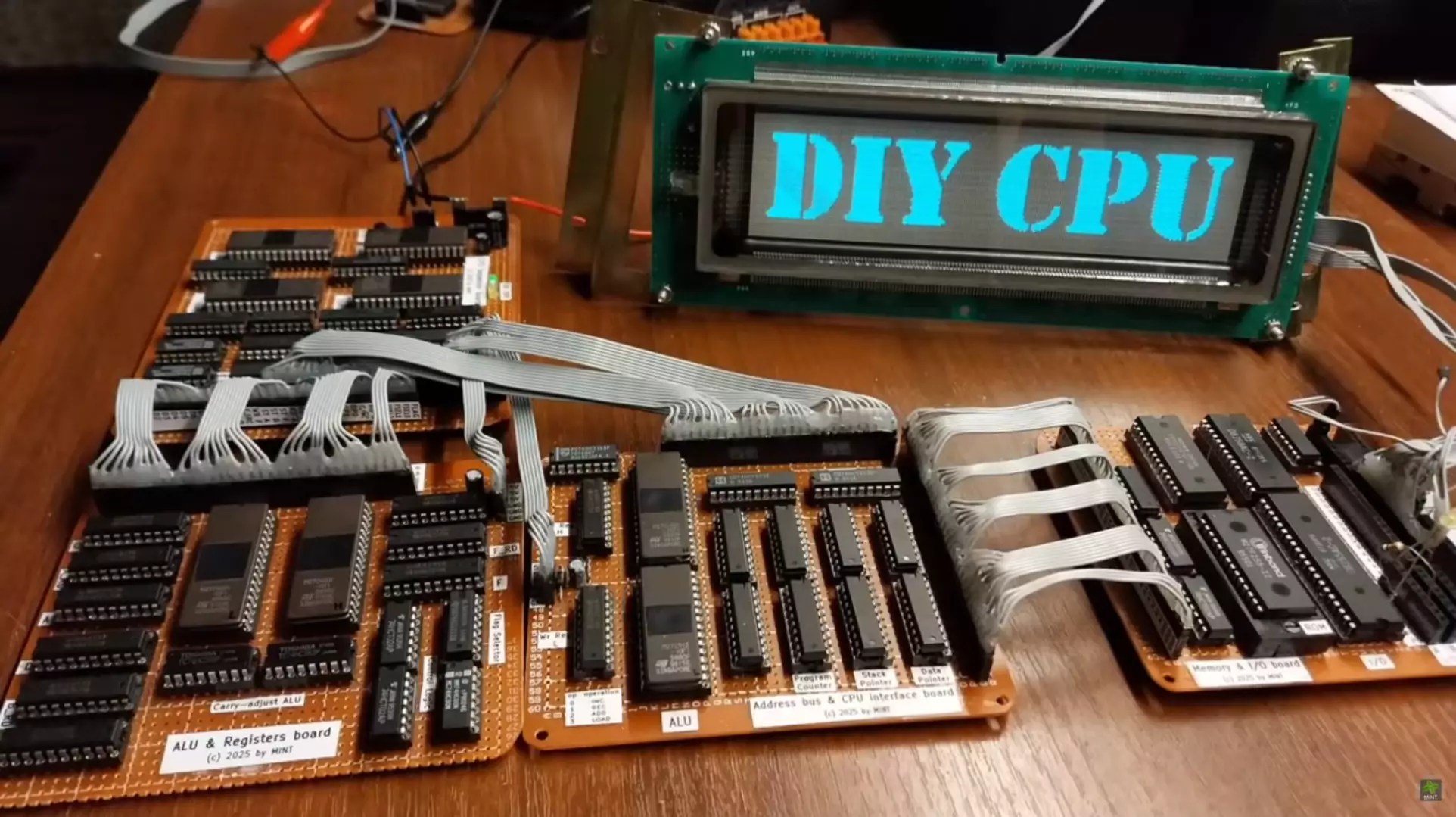In an era dominated by high-performance chips and mass-produced microprocessors, the idea of crafting a CPU by hand from scratch seems almost quaint—yet profoundly inspiring. The recent project by Polish hobbyist Majsterkowanie i nie tylko (MINT) challenges the very notion of technological boundaries. Rather than admire from afar the marvels created in labs and factories, MINT demonstrates that even with rudimentary tools, curiosity, and perseverance, one can construct a functional microprocessor. His journey underscores a broader truth: innovation is accessible not just to corporations but also to passionate individuals willing to tinker and learn.
This accomplishment isn’t merely about technical achievement; it embodies a philosophical statement about the democratization of technology. By choosing retro 8-bit components such as the Zilog Z80, MINT pays homage to computing roots while emphasizing that complexity is not a prerequisite for ingenuity. His project isn’t just a demonstration of soldering skills—it is a testament to the creative spirit that lies dormant in many, waiting to be unleashed through patience and curiosity.
The Historical Significance and Revival of Retro Computing
The choice of components is no accident. The Z80, a processor that marked the dawn of personal computing, symbolizes the accessibility of early computer engineering. In a sense, MINT’s work is a revival—bringing vintage hardware into the modern era, but with a twist. This movement towards retro computing isn’t just nostalgic; it offers valuable insights into how modern processors have evolved, and how fundamental principles remain consistent.
Rebuilding a CPU with these chips sheds light on the foundational concepts that underpin all modern machines. It forces one to confront the intricacies of logic gates, data pathways, and control signals—concepts often buried under layers of abstraction in contemporary systems. For hobbyists and students alike, such projects serve as powerful educational tools, revealing the soul of computing that is sometimes obscured in sleek, polished devices.
Challenges and Triumphs of DIY Microprocessor Construction
Constructing a CPU from scratch — especially by someone without formal microelectronics training — is an undertaking fraught with technical hurdles. MINT’s three-month journey involved meticulous soldering, trial and error, and an immense investment of time in writing code. It’s important to recognize that such a project isn’t a mere hobbyist dalliance but a deep dive into the core mechanics of computer logic.
Throughout this process, MINT highlighted the significance of understanding how components communicate—how signals are processed, stored, and manipulated. His efforts to control a VFD display and even play scenes from The Matrix are beyond demonstration; they symbolize a breakthrough in showing that with enough dedication, the act of creating a CPU can be a truly artistic endeavor. It’s an inspiring reminder that for those willing to embrace complexity, the possibility of creating functional technology from scratch exists—even today.
The Real Value Beyond Technical Achievement
This project poses a provocative question: what does it mean to innovate? In a world where rapid technological advancement often means outsourcing and automation, MINT’s work reinvigorates the human element. Building a processor with your own hands, understanding every gate—and coding to make it work—transcends mere assembly language or pre-fab chips.
More importantly, projects like this challenge the elitism surrounding technology development. They inspire a new generation of tinkerers to experiment without fear of failure. It underscores an essential truth: innovation doesn’t always have to be high-tech or expensive. Sometimes, the most profound breakthroughs happen when ordinary enthusiasts dare to understand and rebuild the fundamentals.
MINT’s DIY CPU project is more than a technical curiosity; it’s a bold statement about curiosity, perseverance, and the timeless human desire to understand and create. It reminds us that even in an age of ultra-complex machines, the key to progress lies in mastering the basics and pushing boundaries—one meticulously soldered connection at a time.


Leave a Reply